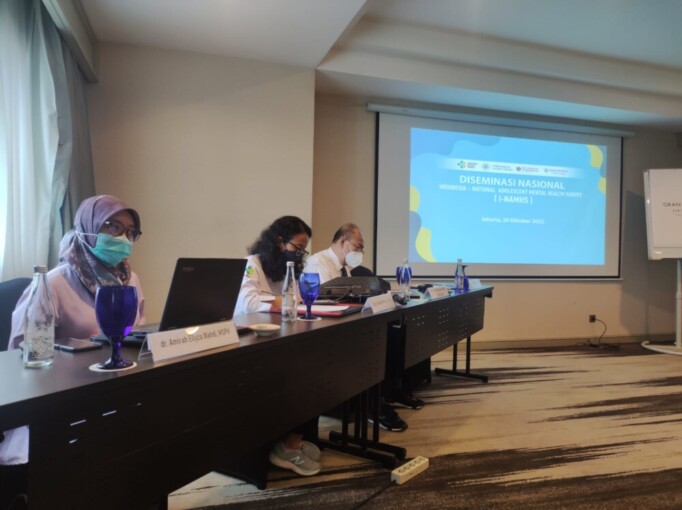
The Indonesia – National Adolescent Mental Health Survey (I-NAMHS) is the first national mental health survey in Indonesia that measures the prevalence of mental disorders in adolescents aged 10-17 years in Indonesia. I-NAMHS is part of the National Adolescent Mental Health Surveys (NAMHS) which was also conducted in Kenya (K-NAMHS) and Vietnam (V-NAMHS). This research was carried out in collaboration between Gadjah Mada University (UGM), the University of Queensland (UQ) in Australia (lead organization of NAMHS), the Johns Hopkins Bloomberg School of Public Health (JHSPH) in the United States, Ministry of Health of the Republic of Indonesia (Kemenkes), University of North Sumatra (USU) and Hasanuddin University (Unhas).
The I-NAMHS measured the prevalence of six mental disorders among adolescents, namely social phobia, generalized anxiety disorder, major depressive disorder, conduct disorder, post-traumatic stress disorder (PTSD), and attention-deficit/hyperactivity disorder (ADHD). I-NAMHS also measured risk and protective factors associated with adolescent mental disorders such as bullying, school and education, peer and family relationships, sexual behavior, substance use, and adverse childhood experiences. Measures of service use were also included.
Data collection was conducted in 2021 by enumerators trained to conduct interviews with adolescents and their caregiver. All data collection processes were carried out following health protocols. A total of 5,664 pairs of adolescents and their caregiver participated in I-NAMHS.
The results showed that one in three Indonesian adolescents experienced a mental health problem in the past 12 months, while one in twenty Indonesian adolescents had a mental disorder in the past 12 months. These figures are equivalent to 15.5 million and 2.45 million adolescents, respectively. Adolescents were diagnosed with mental disorders in accordance with the Diagnostic and Statistical Manual of Mental Disorders Fifth Edition (DSM-5) which is the guideline for establishing the diagnosis of mental disorders in Indonesia and internationally.
The most common mental disorders suffered by adolescents were anxiety disorders (a combination of social phobia and generalized anxiety disorder) at 3.7%, followed by major depressive disorder (1.0%), conduct disorder (0.9%), and PTSD and ADHD (both 0.5%).
I-NAMHS also revealed that although the Government has increased access to various health facilities, few adolescents seek professional help for their mental health problems. Only 2.6% of adolescents with mental health problems accessed services in the past 12 months.
I-NAMHS also found that most (38.2%) caregivers of adolescents choose to access mental health services from schools. On the other hand, of all caregivers who stated that their adolescent needed help, more than two-fifths (43.8%) reported that they did not seek help because they preferred to deal with the adolescent’s problems on their own or with support from family and friends.
The impact of the COVID-19 pandemic on adolescent mental health
Data collection was conducted in the midst of the COVID-19 pandemic so that I-NAMHS had the opportunity to collect additional data on the impact of the COVID-19 pandemic on adolescent mental health. As many as 1 in 20 adolescents reported often feeling more depressed, more anxious, lonelier, or having more difficulty concentrating than before the COVID-19 pandemic.
The future of adolescent mental health in Indonesia
Based on the 2020 Population Census, almost 20% of the total population of Indonesia is aged 10-19 years. The adolescent population has an important role in the development of Indonesia, especially to achieve the demographic bonus and realize the vision of Indonesia Golden Generation 2024.
Professor of FK-KMK UGM, Prof. dr. Siswanto Agus Wilopo, SU, M.Sc., Sc.D, Principal Researcher of I-NAMHS, emphasizes the importance of the availability of national-scale prevalence data such as I-NAMHS. “So far, the data we had prior to I-NAMHS did not represent Indonesia or is not based on diagnosis, so program planning and advocacy on adolescent mental health are not well targeted. I-NAMHS can help the Government and other parties related to adolescent mental health in designing better programs and advocacy for our youth,” he said.

